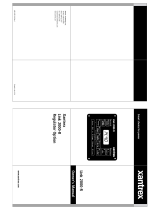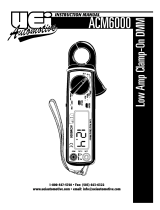C.E. Niehoff & Co N1245/N1248-3 TG Troubleshooting guide
- Type
- Troubleshooting guide
C.E. Niehoff & Co N1245/N1248-3 TG is a high-performance alternator designed for use in a variety of applications. It is internally rectified and features all non-moving windings and current-transmitting components, eliminating the need for brushes or slip rings that can wear out. The alternator is self-energizing and provides a stable output voltage, even under varying load conditions. It also has a soft start feature that prevents abrupt mechanical load on the accessory drive system. The N1245/N1248-3 TG is a reliable and durable alternator that is ideal for use in demanding applications.
C.E. Niehoff & Co N1245/N1248-3 TG is a high-performance alternator designed for use in a variety of applications. It is internally rectified and features all non-moving windings and current-transmitting components, eliminating the need for brushes or slip rings that can wear out. The alternator is self-energizing and provides a stable output voltage, even under varying load conditions. It also has a soft start feature that prevents abrupt mechanical load on the accessory drive system. The N1245/N1248-3 TG is a reliable and durable alternator that is ideal for use in demanding applications.








-
 1
1
-
 2
2
-
 3
3
-
 4
4
-
 5
5
-
 6
6
-
 7
7
-
 8
8
C.E. Niehoff & Co N1245/N1248-3 TG Troubleshooting guide
- Type
- Troubleshooting guide
C.E. Niehoff & Co N1245/N1248-3 TG is a high-performance alternator designed for use in a variety of applications. It is internally rectified and features all non-moving windings and current-transmitting components, eliminating the need for brushes or slip rings that can wear out. The alternator is self-energizing and provides a stable output voltage, even under varying load conditions. It also has a soft start feature that prevents abrupt mechanical load on the accessory drive system. The N1245/N1248-3 TG is a reliable and durable alternator that is ideal for use in demanding applications.
Ask a question and I''ll find the answer in the document
Finding information in a document is now easier with AI
Related papers
-
C.E. Niehoff & Co N1609 TG Troubleshooting guide
-
C.E. Niehoff & Co C702D TG Troubleshooting guide
-
C.E. Niehoff & Co N1313 TG Troubleshooting guide
-
C.E. Niehoff & Co N1326-1 TG Troubleshooting guide
-
C.E. Niehoff & Co N1128 TG Troubleshooting guide
-
C.E. Niehoff & Co C803D TG Troubleshooting guide
-
C.E. Niehoff & Co C714 TG Troubleshooting guide
-
C.E. Niehoff & Co C840D TG Troubleshooting guide
-
C.E. Niehoff & Co C528 TG Troubleshooting guide
-
C.E. Niehoff & Co N1632 TG Troubleshooting guide
Other documents
-
C.E. Niehoff C803D/C840D Alternator Retrofit/Upgrade Installation guide
-
Volvo VN User manual
-
Carrier 69GN15-114 Operation And Service Manual
-
Craftsman 161210400 Owner's manual
-
Victron energy Alternator Owner's manual
-
 Xantrex Link 2000-R User manual
Xantrex Link 2000-R User manual
-
ACDelco 26 SI User manual
-
 UEi PAC45 User manual
UEi PAC45 User manual
-
 Xantrex Link 2000-R Owner's manual
Xantrex Link 2000-R Owner's manual
-
Generac 86640 User manual










